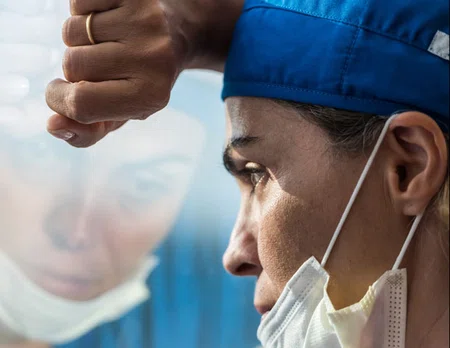

In this
issue

WELCOME
NURSING SCIENCE

Developing the Art of Nursing

Late-afternoon communication and patient planning (CAPP) rounds: an intervention to allow early patient discharges
EDUCATION
PRACTICE

Providing Age-Friendly Care through “What Matters Most”

Preventing Burnout through Self-Care and Self-Awareness
PROFESSIONAL DEVELOPMENT
FROM OUR TEAMS

Improving Critical Thinking, Listening, and Communication Skills for The Patient Care Assistant

DiscoveRN UAA Spotlight: Bertha Jones

ABOUT DISCOVERN
FROM OUR TEAMS
Improving Critical Thinking, Listening, and Communication Skills for The Patient Care Assistant
By Latoya Clower, MSN, RN, CVRN-BC
By Latoya Clower, MSN, RN, CVRN-BC

Critical thinking is a complex cognitive process that allows individuals to analyze a situation, develop a set of appropriate actions and strive to achieve the proper solution. Even though this is an essential skill for nurses at the bedside, as primary caregivers, Patient Care Assistants (PCAs) must also be able to utilize critical thinking skills, effective listening and communication (Schub & Karakashian, 2018). As innovations are made in healthcare to accommodate the needs of complex care, staff members must remain versatile and adaptable.
To assist staff with identifying and recognizing patient care demands, housewide, quarterly PCA education sessions are provided. The sessions' primary focus is exposure to topics including quality measures, patient care policy reinforcement, and innovations in patient care delivery. Training sessions allow participants to expand their knowledge base and enhance personal skill abilities within the clinical setting.
The central education topic in the second quarter PCA education was "defining the PCA role in adequate patient observation and reporting." A few critical issues covered during the training session included delegation and escalation, recognizing abnormal vital sign trends and identifying the septic and hypoglycemic patient. The PCA plays a pivotal role at the bedside in recognizing and promptly communicating subtle changes to the registered nurse. During the training sessions, PCAs were referred to as the "eyes and ears" of the nurse. Before abnormal vital sign trends appear, fluctuations in a patient's baseline behavior or glucose levels may become evident. PCAs must be able to recognize and report those changes to the nurse immediately.
Some of the key highlights of the training were emphasizing critical components of patient care, including bedside shift report, performing intentional hourly rounding, and the rationale for developing a baseline observation for each patient. As knowledge of the individual patient increases, the PCA's overall judgment is enhanced. The quarterly education session ultimately allows PCAs to walk away feeling competent and confident as they continue to work in an ever-changing, dynamic clinical setting.
Reference:
Related Articles

FROM OUR TEAMS
DiscoveRN UAA Spotlight: Bertha Jones

PRACTICE
Preventing Burnout through Self-Care and Self-Awareness
Contact us at CNREPHelp@houstonmethodist.org
Questions or comments?
© 2023. Houston Methodist, Houston, TX. All rights reserved.









